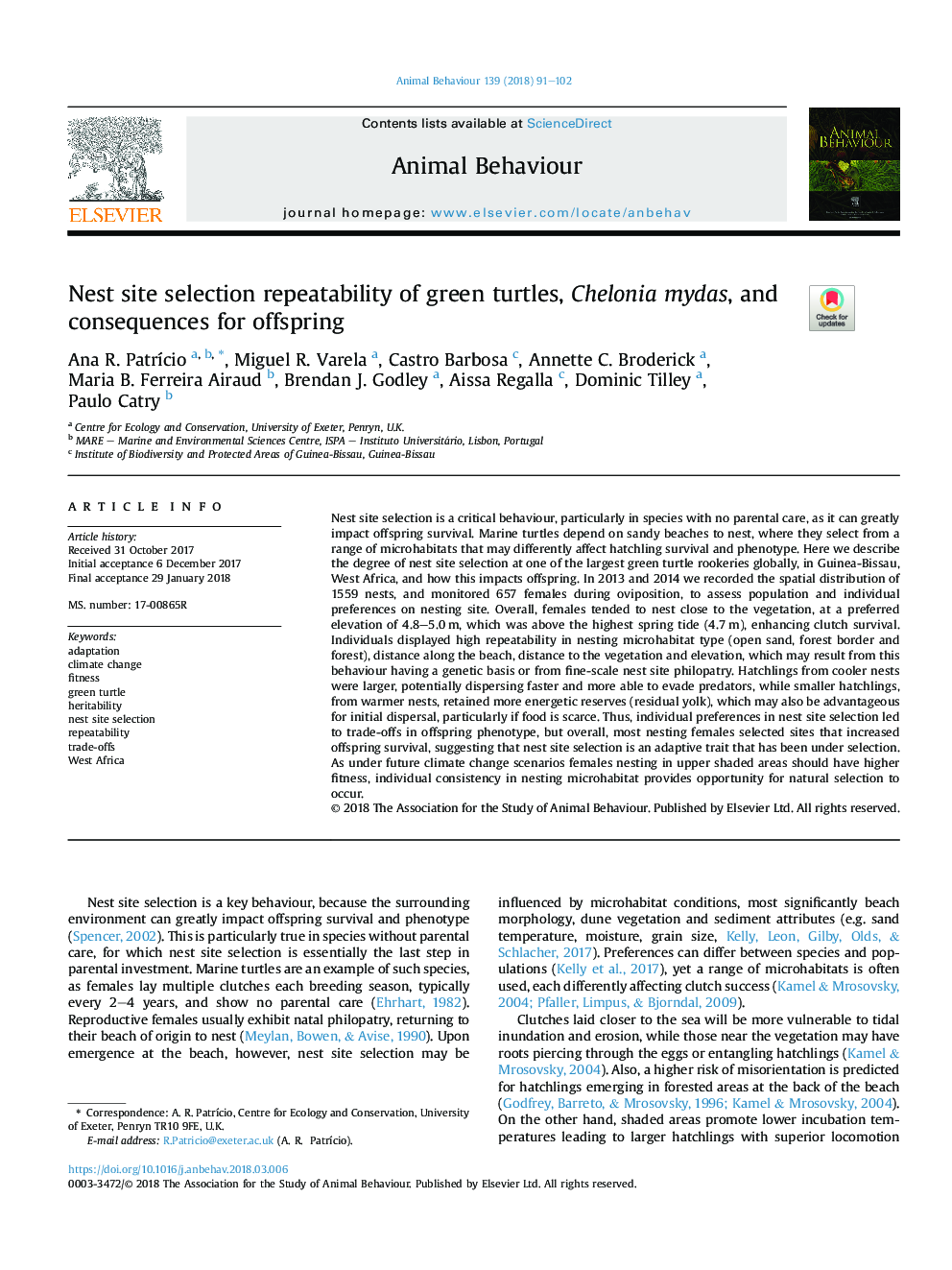| Article ID | Journal | Published Year | Pages | File Type |
|---|---|---|---|---|
| 8488564 | Animal Behaviour | 2018 | 12 Pages |
Abstract
Nest site selection is a critical behaviour, particularly in species with no parental care, as it can greatly impact offspring survival. Marine turtles depend on sandy beaches to nest, where they select from a range of microhabitats that may differently affect hatchling survival and phenotype. Here we describe the degree of nest site selection at one of the largest green turtle rookeries globally, in Guinea-Bissau, West Africa, and how this impacts offspring. In 2013 and 2014 we recorded the spatial distribution of 1559 nests, and monitored 657 females during oviposition, to assess population and individual preferences on nesting site. Overall, females tended to nest close to the vegetation, at a preferred elevation of 4.8-5.0Â m, which was above the highest spring tide (4.7Â m), enhancing clutch survival. Individuals displayed high repeatability in nesting microhabitat type (open sand, forest border and forest), distance along the beach, distance to the vegetation and elevation, which may result from this behaviour having a genetic basis or from fine-scale nest site philopatry. Hatchlings from cooler nests were larger, potentially dispersing faster and more able to evade predators, while smaller hatchlings, from warmer nests, retained more energetic reserves (residual yolk), which may also be advantageous for initial dispersal, particularly if food is scarce. Thus, individual preferences in nest site selection led to trade-offs in offspring phenotype, but overall, most nesting females selected sites that increased offspring survival, suggesting that nest site selection is an adaptive trait that has been under selection. As under future climate change scenarios females nesting in upper shaded areas should have higher fitness, individual consistency in nesting microhabitat provides opportunity for natural selection to occur.
Keywords
Related Topics
Life Sciences
Agricultural and Biological Sciences
Animal Science and Zoology
Authors
Ana R. PatrÃcio, Miguel R. Varela, Castro Barbosa, Annette C. Broderick, Maria B. Ferreira Airaud, Brendan J. Godley, Aissa Regalla, Dominic Tilley, Paulo Catry,
